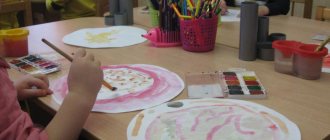Tableware items - list
The traditional table set includes:
- Plates – deep, shallow, dessert
- Broth bowls, soup bowls, sometimes tureens;
- Banquet dishes (of different shapes and sizes, including rectangular);
- Herring bowls, gravy boats, bread bins;
- A variety of vases for fruits, desserts and flowers;
- Teapots, coffee pots, cups and saucers;
- Milk jugs, sugar bowls, creamers, bowls and sockets:
- Glasses, glasses, shot glasses;
- Jugs, decanters, napkin holders;
- Cutlery for spices.
Serving utensils (dining tableware)
Dinnerware is a utensil that we see all the time at dinner. All subjects are divided into basic and additional. The main types of utensils include:
- For bread, pies and flour products - 175 mm plates and bread bins;
- For cold dishes - salad bowls (round and square), 200 mm plates, containers for cold cuts (fish, meat, vegetable snacks, canapés, sandwiches), herring bowls, vases, gravy boats, menu bowls;
- Dishes for first and second courses - tureens, broth bowls (250-300 ml), soup cups with lids, plates of different sizes, volumes and diameters, pots, cocotte makers of different shapes and sizes (for meat, fish, poultry), casserole or lamb;
- For dessert - 200 mm plates, rosettes, vases.
To make it easier and more convenient to remember, tableware items are placed in tables:
Tea and coffee sets.
For alcohol (glasses, shot glasses, wine glasses).
Auxiliary or additional utensils. It includes napkin holders, whatnots, salt shakers, pepper shakers, cooling buckets, and other items that belong to tableware, but are not always included in the set of sets. Usually purchased separately. They are made in an original design and serve as an additional decoration for the festive table.
Food storage utensils
- For finished products, cereals, and semi-finished pasta, food containers with flat, adjacent lids made of plastic and glass are often used. They have different capacities, different shapes and colors.
- To protect the packaging from access to air and moisture, and from foreign odors, cling film is used. It reliably seals products.
- For long-term food preservation, a vacuum container is the best. It ensures that air does not enter the container, thereby protecting the product from spoilage.
- Modern glass vessels come in a variety of designs, shapes and colorful decorations. They are used not only for food storage and preservation, but also for interior decoration.
- Wooden and ceramic products are suitable for storing dry bulk products and spices. Such dishes quickly absorb odors and are not suitable for liquid and prepared foods.
- Food products are often prepared and kept in enamel cookware. It is necessary to regularly inspect its surface; Make sure there are no chips, cracks or other defects.
- Aluminum cookware perfectly protects food from drying out. The metal oxidizes, so it cannot be used for salty and sour dishes.
- Stainless steel products are not subject to corrosion, so they are ideal for containing any finished, raw and semi-finished products.
Types of cookware by purpose
All household utensils are divided according to their purpose:
- Kitchen - this type is necessary for cooking. It includes a variety of pots, kettles, roasting pans, baking trays and baking tins. This also includes special devices for working with products.
- Dining room - for setting the table and serving ready-made dishes. The serving group includes utensils that are constantly needed during meals: tureens, plates, mugs, tea and coffee cups and accessories, cutlery.
- Storage utensils are a variety of vessels for preserving cooked food, semi-finished products, meat, fish and vegetables, these include various containers with lids.






